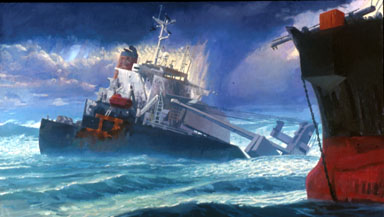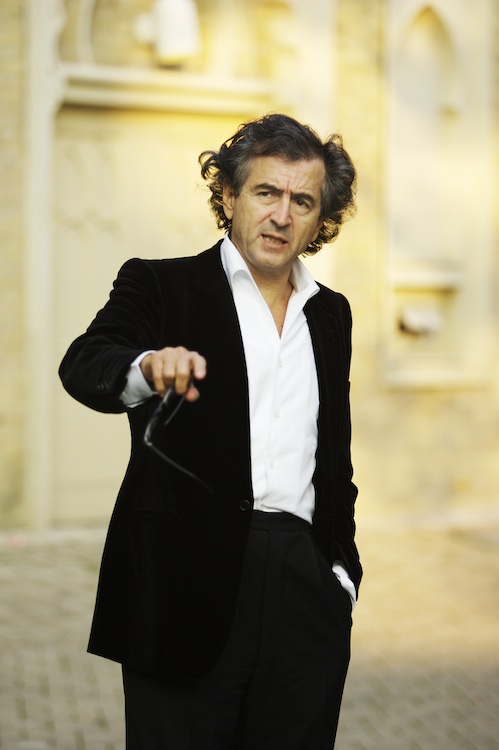With the late September sun blazing and the pinot noir grapes sweetening by the minute, Scatter attempts to move its attention from dreams of wine-y complexity to almost anything else.
 1. The New Carissa. We met the news that the salvage of the stern of the New Carissa on the coast near Coos Bay was nearly complete with some unexpected sadness. Remove it as though it never happened? The derelict New Carissa was a formidable adversary, defying our best efforts to… well, do anything with her that we wanted. Just the saga of the bow section — towed (with great difficulty) out to sea for burial, it breaks free in a storm and re-grounds near Waldport, gets a tow back out to deep water where it is blasted by a destroyer and sunk by a torpedo into 10,000 feet of water — is incredible. It would have all been completely comic if oil from the ship hadn’t leaked and destroyed marine wildlife nearby. Put us in the camp with those who would have left a hunk of stern on the beach, not as a tourist attraction, mind you, which would have been silly, but as a monument to our folly, a permanent metaphor. (That’s Henk Pander’s Wreck of the New Carissa, above.)
1. The New Carissa. We met the news that the salvage of the stern of the New Carissa on the coast near Coos Bay was nearly complete with some unexpected sadness. Remove it as though it never happened? The derelict New Carissa was a formidable adversary, defying our best efforts to… well, do anything with her that we wanted. Just the saga of the bow section — towed (with great difficulty) out to sea for burial, it breaks free in a storm and re-grounds near Waldport, gets a tow back out to deep water where it is blasted by a destroyer and sunk by a torpedo into 10,000 feet of water — is incredible. It would have all been completely comic if oil from the ship hadn’t leaked and destroyed marine wildlife nearby. Put us in the camp with those who would have left a hunk of stern on the beach, not as a tourist attraction, mind you, which would have been silly, but as a monument to our folly, a permanent metaphor. (That’s Henk Pander’s Wreck of the New Carissa, above.)
2. WaMu, Seattle misses you. We linked you to Regina Hackett’s story in the Seattle P-I that detailed some worry about the fate of Washington Mutual and the building-sharing agreement it has with the Seattle Art Museum. Now, of course, WaMu has turned into a subsidiary of JP Morgan Chase & Co. and her new story with John Marshall talks about the worry at many other Seattle arts organizations that WaMu’s extensive arts funding will diminish or disappear. This is just the direct fallout from the sub-prime loan mess; we have yet to see how much deeper this blade will cut.
 3. Mark Rothko at the Tate. Scatter follows Rothko pretty closely — he went to Lincoln High School, after all, and was a friend of Portland painters Carl and Hilda Morris — even though we sometimes don’t know what to make of him. Or maybe it’s that we think different things about him at different times. In any case, the show of his late work (1958 when he famously withdrew from his Four Seasons restaurant commission in the Seagram buildling until his suicide in 1970) at the Tate Modern in London is drawing similarly mixed responses. We recommend a reading of Laura Cumming’s review in the Observer, which describes an exhausted Rothko and locates the figurative elements threatening to bust loose in all the abstraction. Rachel Campbell-Johnston in the London Times, however, finds something altogether different — a lighter, brighter, soaring Rothko. Let’s see: exhausted or soaring? Maybe a trip to London to sort all of this out would be in order if only the Scatter piggy bank didn’t rattle so forlornly.
3. Mark Rothko at the Tate. Scatter follows Rothko pretty closely — he went to Lincoln High School, after all, and was a friend of Portland painters Carl and Hilda Morris — even though we sometimes don’t know what to make of him. Or maybe it’s that we think different things about him at different times. In any case, the show of his late work (1958 when he famously withdrew from his Four Seasons restaurant commission in the Seagram buildling until his suicide in 1970) at the Tate Modern in London is drawing similarly mixed responses. We recommend a reading of Laura Cumming’s review in the Observer, which describes an exhausted Rothko and locates the figurative elements threatening to bust loose in all the abstraction. Rachel Campbell-Johnston in the London Times, however, finds something altogether different — a lighter, brighter, soaring Rothko. Let’s see: exhausted or soaring? Maybe a trip to London to sort all of this out would be in order if only the Scatter piggy bank didn’t rattle so forlornly.











